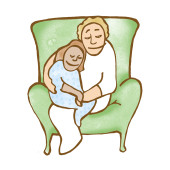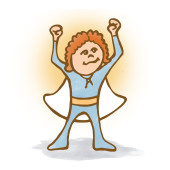Building Resilience After Sudden Tragedy
Sutherland Springs is due south of our home in Austin and on the way to Corpus Christi where my mother-in-law lives. I prefer to take the backroads when driving in Texas because the landscape and small towns are so beautiful and full of character. As a native New Yorker, I still romanticize Texas as a state of Tall Tales and cowboy adventures — but I know the truth…it is a state with an enormous heart.
It will take a long time for the people of Texas to recover from the church shooting in Sutherland Springs. There will be strong emotions and a flood of support (as was the case after the Houston flood) — but there will also be a deep desire to find meaning. How did this happen? What do we need to do to make sure this never happens again?
In our experience and view, children are not looking for meaning. They are not seeking an understanding of motivation. They do not want to know the details of the shooting or the biography of the shooter. They may ask questions like “Why did he do it?” but we believe that deep down, all they want to know is that they and the people they love … are safe.
So how do we do that in the age of Newtown, Orlando, Charleston, and Las Vegas?
How do we assure children that “You Are Safe and the World Is Good" when there are so many indications in the news that tragedy seems to be hiding behind every corner and can happen at any moment?
We pause.
We center.
And we remember the incredible strength and reassurance children get from the basics: rhythm, nourishment, and love.
Three Basics
1. Rhythm. A child’s sense of safety and expectation is formed with regularity. Their resilience gets stronger and more durable when they don’t have to use their energy adapting to change. Consistent mealtimes, bedtimes, worktimes, and transitions are like regular watering for a garden. Do not underestimate the power of rhythm for a young child. Daily rhythms hold the same kind of magic that builds apple trees, those that are still standing after ice storms and hurricanes — the picture of resilience.
2. Nourishment. You are what you eat — we know this. We know that organic, nutrient-dense foods are better for growing bodies — but sometimes we forget that this motto is appropriate for EVERYTHING our children consume. What are they watching? What are they listening to? What are they wearing? Who are they with? This is not an invitation to neurotically try to control all the variables in your child’s life — no, it is an invitation to be conscious of the details. It is an opportunity to adjust their daily menu in a wide variety of ways. Perhaps instead of hearing the news on the radio, they listen only to soothing stories for a while. Perhaps instead of rushing to the next activity, they lie down wrapped in soft quilts for a few minutes. Perhaps instead of overhearing grown-ups talk about big topics, they go for a walk outside and watch the geese fly overhead. You know what is good for your children to consume.
3. Love. This one thing can bring the most transformation. It is incredible to me that I can go from fear and resentment to love and gratitude just by changing my focus. If I look away from the news and look at the eager expression on our foster dog’s face, I tap into love … and everything changes. Perhaps my oldest boy comes home from school full of complaints about the proposed menu for dinner. Instead of explaining why he should be grateful, I can focus all my attention on how lucky I am to have a healthy son full of life and opportunity. Instead of going toe to toe with my younger son about homework, I can call out “love break!” and then scoop him up in my arms. This is a great way to model resilience for our children. Demonstrate to them how effective love and gratitude is — especially during times of challenge and pain. Look to the light — there is always some nearby.
And parents, all of this is just as good for you. Do step away from the news, and give these basics to yourselves. You'll not only be more able to support your children, but you'll be modeling good self-care.
But what if my children are in a panic?
These basics can be a challenge when we are worried about our children or if our children are in a panic. To help support children who are agitated from the news, consider offering them these two stories (below).
One is about building resilience and the other is about how to literally “shake” off the trauma to make room for healing.
About the Author

David Sewell McCann
David Sewell McCann fell in love with spinning stories in first grade – the day a storyteller came to his class and captured his mind and imagination. He has been engaged in storytelling all of his adult life through painting, film-making, teaching and performing. Out of his experience as a Waldorf elementary class teacher and parent, he has developed a four step method of intuitive storytelling, which he now shares through workshops and through this website.



